In southern Colorado, you can find two very different sites that help explain the history and culture of the Anasazi, an ancient indigenous people.
Manitou Cliff Dwellings
For those who are not familiar with the site: the Manitou Cliff Dwellings are a reconstruction of ancient Anasazi cliff dwellings, using original “rubble” from destroyed ancient sites in the Four Corners area. No settlements of this kind ever existed in Manitou Springs – the location for this reconstruction, which opened to the public in 1907, was probably chosen because the cliffs at Manitou Springs were just perfect for the purpose, could easily be accessed by foot, and were within a manageable travel distance from Colorado Springs and Denver at a time when few people had the means or desire to undertake longer journeys to rural places in the far Southwest.
The fact that these are reconstructions (and “relocations”) often leads to criticisms that they are inauthentic. That may well be. I visited them in preparation for a later visit to Mesa Verde National Park. As an archaeological site, Mesa Verde naturally offers only limited accessibility, especially for those whose physical abilities are restricted. The Manitou Cliff Dwellings, on the other hand, are within a very short walking distance from the car park, and you can enter the buildings and walk around in them. (Note: although I would regard these reconstructions as easily accessible even for the frail and the elderly, they are not wheelchair-accessible.) These reconstructions might also turn out to be more suitable and enjoyable for small children as compared to Mesa Verde.
The advantage to me personally seemed obvious: having been able to walk around within these reconstructions, I would have a much better understanding (and spatial awareness) of the sites at Mesa Verde even as I was merely going to stand in front of them.
A visit to the Manitou Cliff Dwellings requires only a very short detour from I-25 for all those visitors to the region who are traveling south on that interstate anyway. Check the website for opening hours and entrance fees.
Mesa Verde National Park
Cortez is a short distance from Mesa Verde and I found it made a good place to stay the night before visiting the park.
Here, I feel I have to stress a point that in my opinion is not made clear enough in travel literature and the like: the drive up to the top of the mesa is not something for faint-hearted drivers. Although this is not, by far, the worst road in the Southwest as far as mountainous roads go, it still consists of a number of sharp switchbacks, sometimes accompanied by several hundred feet drops (some less steep, some more so) next to the road. Guardrails or other forms of protective crash barriers are, as in most national parks, largely non-existent.
This road is even less appealing driving back down and will represent a challenge for the many tourists unused to driving in mountain conditions and those driving unfamiliar rental cars. Remember that some poor souls may have rented an RV for their holiday.
Mesa Verde National Park consists of several parts, but the main attractions are the four major cliff dwellings: Long House, Cliff Palace, Balcony House, and Spruce Tree House. Of these, only the last one can be visited on a “self-guided-tour”-basis, the other three require the purchase of a tour ticket. To get to Spruce Tree House you have to walk down a (sometimes steep) path starting at the Chapin Mesa Museum. It takes ¼ of a mile to reach the ruins and the walk should be manageable for most people, although frail and elderly visitors may still feel the need for assistance. Since you have to walk down to these dwellings you inevitably have to walk uphill on your way back, which can make even these relatively short distances challenging.
Spruce Tree House
Once there, you can walk right up to Spruce Tree House, the best preserved of the four structures, and take a lot of great pictures, even though with my camera I frequently wished I had the chance to stand further back than was possible. The areas where you can and cannot go are designed thus that you gain as much insight into the structure as possible. Still, my earlier visit to the Manitou Cliff Dwellings reconstruction paid off, as it gave me (a person with limited spatial imagination) a better idea what the whole structure looked like.
While preparing for my trip, I had decided early on not to bother with the other three cliff dwellings (Long House, Cliff Palace, and Balcony House), which require the purchase of tour tickets.
Long House
Long House is part of the Wetherill Mesa which was still closed for late winter when I was there. Cliff Palace (the largest of the structures) and Balcony House are part of Chapin Mesa and accessed through the so-called Cliff Palace Loop (closed in deep winter). You can drive along the loop and especially in the case of the Cliff Palace structure you get the chance to take great pictures by walking a short path to an overlook point without the need to buy a tour ticket.
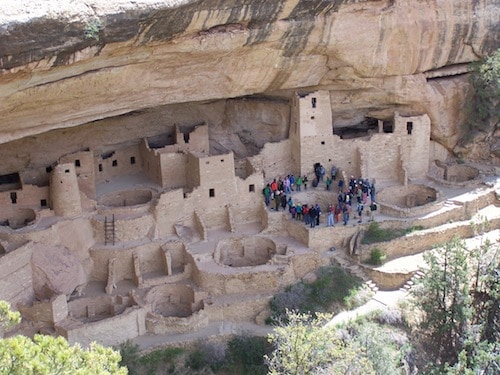
My main reason for not taking part in any of these tours were the descriptions on the Mesa Verde National Park website, which states that the tour of Balcony House “involves climbing a 32 ft. ladder, crawling through a 12ft.-long tunnel, and climbing up a 60ft (20m) open rock face with two 10ft (3m) ladders to exit the site.” While the Cliff Palace Tour apparently “involves climbing five, 8-10ft (2.6-3m) ladders, on a 100ft (30m) vertical climb.” I had decided that these were not for me.
If you are not scared off by these descriptions, your main problem during peak season might be that it could be difficult to get tour tickets on the day and at the time of your choosing. You cannot make reservations online, although apparently, you can pre-book them (by showing up in person at either Mesa Verde or Cortez) up to two days in advance when you are holidaying in the area.
Other Sites
The intense cold and two minor snow showers made me skip a trip to the “lesser” archaeological sites on the so-called Top Mesa Loop, which I would otherwise certainly have visited. Still, even with “only” a visit to Spruce Tree House under my belt, I feel that this national park is well worth the effort.
Mesa Verde is a fascinating place and a destination that should be on everyone’s list when visiting the Southwest. But for those who come here via Denver, I strongly recommend a preparatory visit to the Manitou Cliff Dwellings. With its near-perfect accessibility and Mesa Verde’s undisputed authenticity, you will end up with the best of both worlds.
I headed for Mesa Verde National Park in the early morning of the fifth day of my trip. Having spent the night at Cortez, I had only a short distance to drive.
Here, I feel I have to stress a point that in my opinion is not made clear enough in travel literature and the like: the drive up to the top of the mesa is not something for faint-hearted drivers. Although this is not by far the worst road in the Southwest as far as mountainous roads go, it still consists of a number of sharp switchbacks, sometimes accompanied by several hundred feet drops (some less steep, some more so) next to the road. Guardrails or other forms of protective crash barriers are, as in most national parks, largely non-existent.
As always, this road is even less appealing driving back down and will represent a challenge for the many tourists unused to driving in mountain conditions and those with rental cars of unfamiliar handling and dimensions. Remember that some poor souls may have rented an RV for their holiday
One Response to “The Anasazi Combo – Manitou Cliff Dwellings and Mesa Verde National Park”
Leave a Reply
Tags: anasazi, article, colorado, mesa verde national park, national park

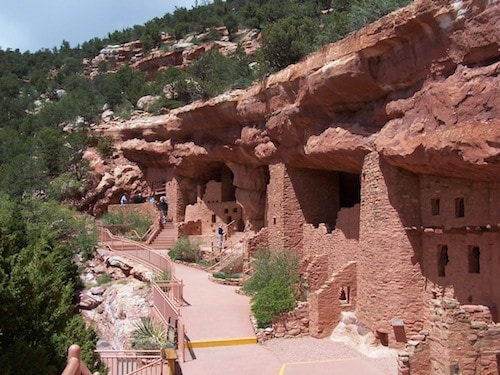
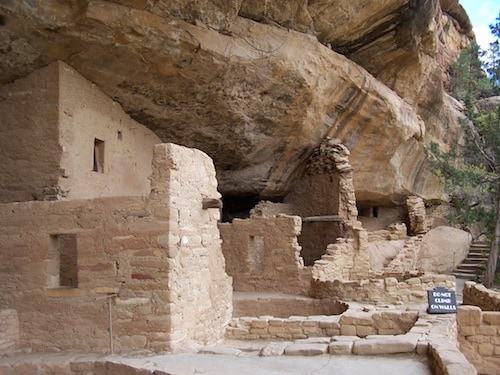
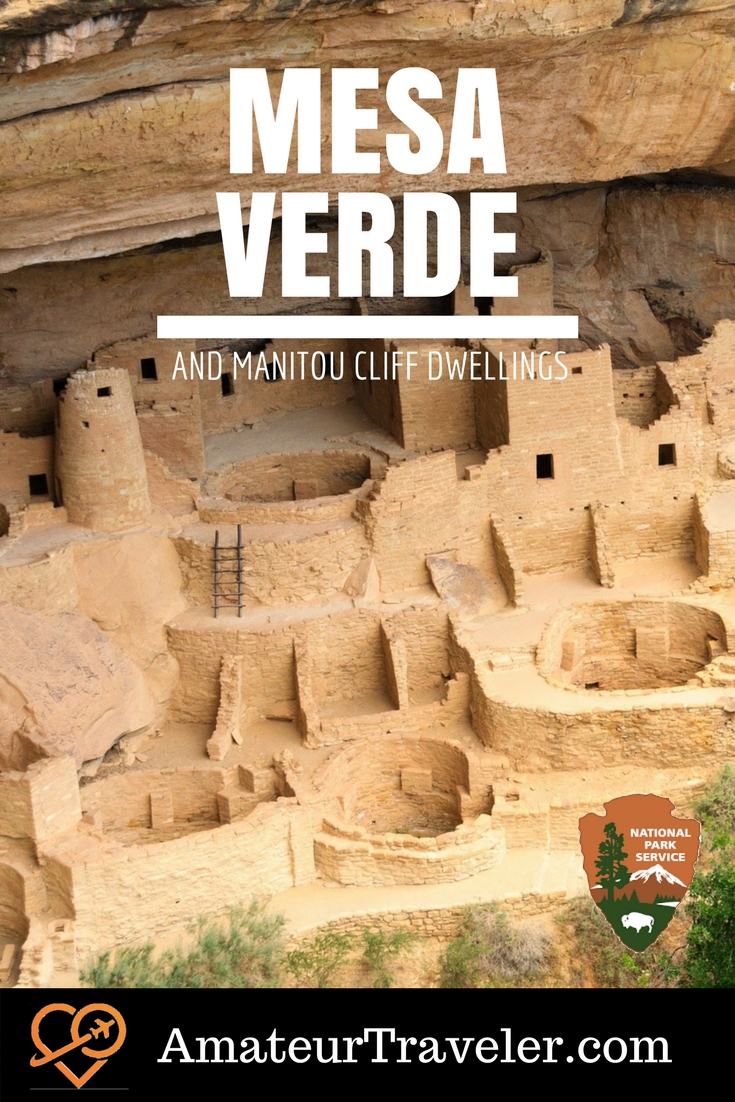
 Colorado Road Trip – Denver, Pagosa Springs, Chimney Rock, Mesa Verde, Durango (Videos #99,#100,#101)
Colorado Road Trip – Denver, Pagosa Springs, Chimney Rock, Mesa Verde, Durango (Videos #99,#100,#101)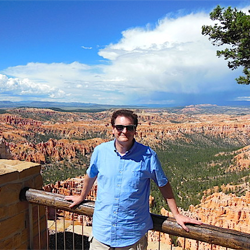 Las Vegas to Zion National Park and Bryce National Park Day Trip
Las Vegas to Zion National Park and Bryce National Park Day Trip 36 Hours at Yosemite: A First Time Visit To America’s Famous National Park
36 Hours at Yosemite: A First Time Visit To America’s Famous National Park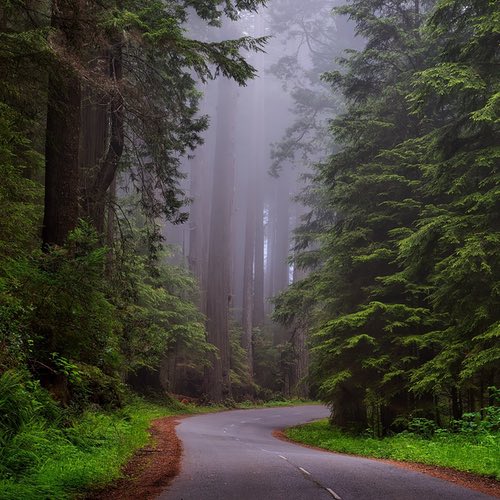 Redwood National Park Itinerary – Big Trees on the California Coast
Redwood National Park Itinerary – Big Trees on the California Coast

Michelle
Says:July 18th, 2023 at 12:20 pm
I went to Mesa Verde and I am not a heights person and I’m rather claustrophobic, but I did both the balcony house and the cliff palace tours and they were definitely worth it. The scariest part to me was the CCC stairs at the end of the Balcony house.